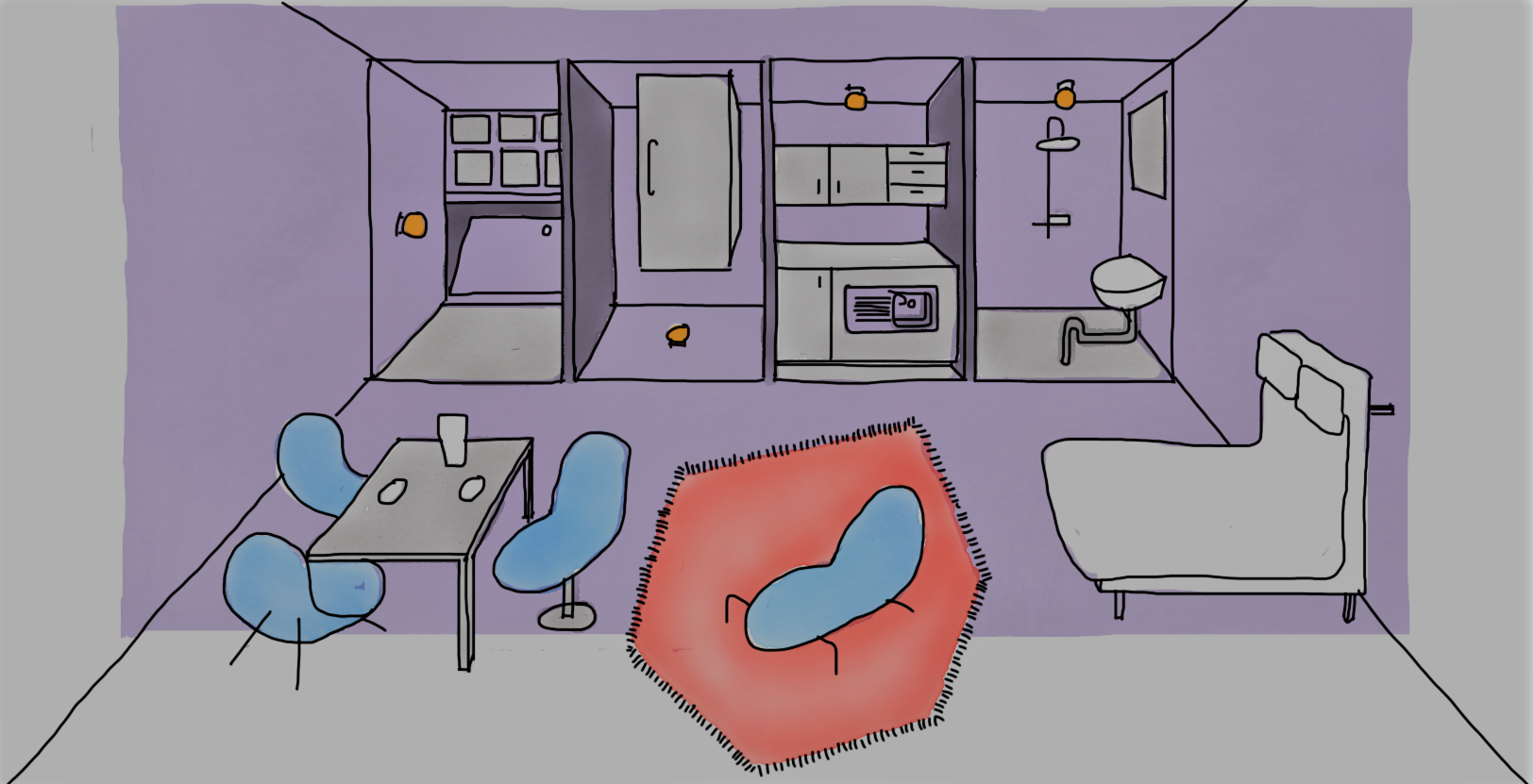The #1 prerequisite for practice success isn’t what you think
It’s a constant battle.
Finding enough hours each day.
Staying patient while one authority or another wraps you in red tape.
Then managing your frustration when a client changes their mind – for the hundred and twenty-seventh time.
And, most importantly, finding a compelling way to stand out from the crowd of your competitors!
I’ve been incredibly lucky to get to know this battle intimately. Because I’ve lived in and around professional practices for more years than I care to remember.
But I also know that winning it – achieving sustainable success in architecture practice – is not the unattainable dream many think it is.
In fact, you need only do two things to achieve it!
[Bear with me… It’s not quite that simple!]
First, you need to understand and avoid the common mistakes most practices make (read more in my recent article: “11 common mistakes successful architecture practices don’t make”)
But simply avoiding mistakes, while necessary, is never enough for any army, or football team or athlete to win their particular battle.
So, second, you need to discover the #1 advantage that every consistently successful practice has.
No, it’s not money.
And neither is it a great body of work.
Nor a stylish, state-of-the-art studio.
Sure, all these help. But generally, they’re outcomes of success, not causes.
The one essential ingredient you must have for enduring practice success is a simple four-letter word.
(No, not that one!)
And that word is… team.
Architecture is always a team sport. Whether you’re a sole practitioner, or the principal of a large multi-office practice, you’re reliant on a range of players working together to successfully deliver your product. Some of these players may sit inside your practice, while others may be collaborators, consultants or outsourced contributors.
Regardless, their ability to align and function as a high-performing team will be the ultimate determinant of your practice’s success.
And given the rarity of high-performing teams, it can be your compelling point of difference.
A high-performing team can overcome all sorts of challenges and, more importantly, consistently generate real innovation and sustainable business growth. While a mere group or collective of individuals, no matter how talented some of those individuals may be, will need to work exceptionally hard just to avoid going backwards.
And this isn’t just my opinion.
The reality is that as human beings, we are all wired for survival. And so, we naturally tend towards behaviours designed to protect and preserve us – physically and emotionally.
And while these self-preservation behaviours can be highly functional for individuals, they are fundamentally dysfunctional when it comes to operating as a team.
Patrick Lencioni, author of Death by Meeting, describes this tendency towards dysfunctionalism in his best-selling book, The Five Dysfunctions of a Team.
But if he’d ever worked in an architecture practice, he’d realise that the combination of design thinking, creativity and perfectionism needed to produce great architecture serves to magnify the dysfunctional impact of self-protective attitudes and behaviours.
So, what are these dysfunctional attributes that must be overcome before your people can become the high performing team that’s essential for practice success?
Let’s take a look…
1. You don’t trust one another
“But of course we do!” I can hear your slightly indignant retort, before you’ve even finished reading the heading.
But do you really?
Rationing trust is one of the key self-protection techniques we learn, even as a child. We don’t give trust always. And we seldom give it fully.
Obviously, I’m not talking about ‘everyday’ trust here. Generally, you trust your peers and colleagues not to steal, not to be violent and not to tell lies about important things in your practice.
What I am referring to is more subtle. It’s about your preparedness to be vulnerable with one another. To acknowledge mistakes, let your weaknesses show or ask for assistance.
In a professional setting, showing vulnerability can feel like a bad move. Career-limiting. A sure-fire way to lose respect.
But this is a classic case of self-preservation overriding team interests.
Especially in a creative professional setting like an architecture practice, truly innovative ideas, the thorough testing of options, and the capacity to accelerate learning all rely heavily on the preparedness of individuals to expose their vulnerability. To ask the ‘dumb’ question. To seek clarification when something isn’t understood. To put forward a possibly unpopular idea or suggestion.
Creating a trust-based practice culture – where vulnerability is supported, showing weakness is respected and opportunity for learning is valued – is thus the essential foundation of a high performing team.
2. Everyone tends to avoid conflict
Without trust, you might expect conflict to proliferate. But our individual survival instincts are geared towards choosing ‘fight’ or ‘flight.’ And in workplaces, the most frequent choice tends to be ‘flight.’
The majority of us have been socialised to be polite, non-disruptive and respectful. So, if you’re lower in the pecking order, you don’t want to upset your superiors. And if you’re a leader, you don’t want your team to dislike you. So, conflict is avoided.
But in a creative business setting, where you’re aiming to grow, or succeed, or, dare I say, win, this tendency to avoid anything that looks like conflict is definitely counterproductive.
Firstly, it’s far more likely to send potentially productive dissent or contrary views underground, so they either remain unexpressed, or worse, fester into behind-your-back sniping that only serves to sabotage team efforts.
And second, it deprives your team of the immense value that honest and open communication brings to creative decision-making. The more ideas we generate and the more robustly we evaluate them, the more likely it is that our ultimate solution will be strong.
As Graeme Winter, from ThinkOneTeam International sets out in his Five Shares Quick Wins model, giving and receiving useful feedback, debating, and speaking the truth – respectfully and openly, and making evidence-based rather than emotion-based decisions – are all integral to productive team relationships.
3. There’s insufficient commitment to team decisions and to one another
When conflict is channelled positively into productive decision-making and outcomes, everyone feels their views have been heard and respectfully considered. So, even if your viewpoint or idea isn’t the one that the team ultimately supports, you clearly see and understand how the decision was made and have little difficulty committing to it.
And when you also see the effort your team colleagues are putting in, by being prepared to vulnerably contribute both ideas and useful critique, you’re more prepared to have their back.
But when decisions are made without debate, or some team-members’ input isn’t valued or properly considered, effort levels, and thus commitment, drop.
Frustration dampens enthusiasm.
Ambiguity reduces support for the final decision, and either passive disinterest or even active sabotage result.
And if that decision is a design decision, then subsequent design and even documentation or construction decisions will inevitably suffer.
4. You don’t call on one another to be accountable
But real commitment to your team members and to team outcomes is only one side of the coin. The other side is mutual accountability.
It’s not enough to have one another’s backs. You must also be prepared to call out actions and behaviours of other team members that actively work against, or simply don’t promote, team values and objectives.
And without trust, appropriately channelled conflict, and commitment, keeping others accountable simply doesn’t happen.
Without accountability, many opportunities for team learning, growth and success are missed. And the likelihood that your team will evolve into a high-performing unit is significantly diminished.
5. Personal achievement is prioritised over team results
And in the end, it is performance that matters.
It’s certainly fun being part of a team where you get along with everyone and have a good time. It’s also satisfying to have the respect and admiration of your peers, or to be considered the ‘champion’ or high-achiever of your team.
And naturally, in every team, both the nature and level of individual contributions will vary.
But in practices where there’s honest commitment and robust accountability, everyone’s focus should be on what the team delivers, not on individual achievement.
In the absence of such focus, egos and personal recognition begin to drive team behaviour and team performance goes into reverse. And with it, the best chance you have of sustaining a successful practice.
Your most valuable point of difference
Ultimately, creating and maintaining a purposeful and unified team (or series of teams) is one of the few remaining ways you can position your practice as unique and client-focused.
Because architecture and design practices all appear to offer essentially the same range and quality of services, standing out is a challenge.
An effective team is one your client will want to work with, firstly because of its higher efficiency – better quality decisions, fewer mistakes, less time spent and less time wasted – which every client values, and it’s good for your business profitability as well.
Second, an effective team delivers brilliant design outcomes – more ideas considered, more robustly evaluated and solutions more strongly committed to by the team – ensuring higher levels of client satisfaction and better contributions to your portfolio and marketing material.
And third, great teams tend to stay together. People love being part of something bigger than themselves that they can contribute meaningfully to. And team stability, within reason, tends to preserve the values and behaviours that led to the team becoming great in the first place.
So, how does your team measure up?
Is it dysfunctional? Or high-performing? Or perhaps, somewhere in between?
And ultimately, what are you going to actually do to make your team the effective point of difference it could be, and lead your practice to stand-out success?
If you’re committed to significantly improving the performance of your team, contact WhyWhatHow about our highly effective one-day team-building workshop – specifically tailored to your professional practice – that can really kick-start the process of evolving it into a high-performing team and so delivering greater practice success.
Ross Clark is the founder of Melbourne-based practice management consultancy, WhyWhatHow. He has more than thirty years’ experience mentoring and coaching architects and creative professionals to productively start, creatively innovate, and substantially grow their practices.
You might also like to read Ross’ recent article: “11 common mistakes successful architecture practices don’t make.”
© 2017 WhyWhatHow

